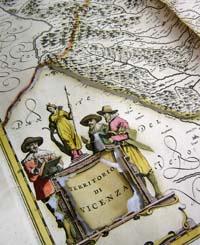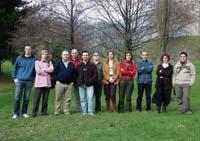Paper for length

In general, there are three objectives of the project. First, it is intended to carry out a diagnosis of the conservation status of ancient papers of archaeological, historical or artistic value. Second, it is intended to preserve these papers using several classical methods, especially by analyzing the degradation processes that have occurred in these cellulosic bases. Finally, a technology is being developed to reconstruct what has been lost from the cellulose base.
When any paper is degraded it is due to an oxidation reaction in the cellulose that composes it for chemical causes. To preserve the paper, the researchers use the compounds generated in this oxidation reaction. They incorporate compounds that react with them, which gives rise to a new polymer structure. That is, a second layer is formed. This layer will contribute in some way to the reconstruction of the basic structure of the paper. This layer has characteristics similar to the original cellulose, but is more stable than this. A comparison would be similar to the skin that is formed to close the wounds.
From papyrus to more modern papers
In the project to extend the life of paper, the UPV/EHU researchers mainly carry out the analysis of papers. They study paper samples from different periods and provenances: papyri, ancient maps, notarial papers, XVIII. Late century newspapers, painted papers, etc.
These papers use various techniques to characterize each and every one of them written, determine and measure the processes of degradation that have suffered these materials, as well as to investigate the effectiveness or not of the processes of conservation of them.
All this without the contact of the UPV/EHU researchers with the samples. They use non-destructive techniques, perform analyses without damaging the sample. This is a great advantage in this type of research. Regardless of the sample, the process is similar in all cases, passing the samples by the same instruments.
Three tools tools

The first tool is a portable Raman spectrometer with microcide. This tool, which works with the laser beam, has a small camcorder to transfer the laser beam to the sample to be analyzed. It is capable of focusing 10 microns and obtaining the spectrum of its components. This tool analyzes the molecular structure of the inorganic compounds contained in the sample.
With X-ray microfluorescence, a basic study is carried out to know the elemental composition of the cellulose base products. In this way, they determine the original components of the sample and auxiliary elements that have somehow reached the sample due to environmental pollution.
In addition, they use an optical microscope with an infrared microspectroscope coupled by Fourier transformation, especially to 'see' the molecular structure of organic compounds. In particular, they observe the degradations that have occurred in the cellulose base. They also analyze the origin of the writing inks or the binders of the pigments used in the paper paint. It is a very sensitive technique, with less than 0.2 milligrams of sample to determine the family of the ligant that has been used in this sample. However, it is practically impossible to know, for example, the ligant used 600 years ago.
This technique allows obtaining the infrared spectrum of the sample, thus completing the information obtained with the other two techniques. After unifying the information obtained with the three techniques, they interpret the results.
Working on a microscopic scale allows identifying products that may never have been considered as products of degradation. The problem lies in how these materials have reached the papers or have been formed from the original materials.






